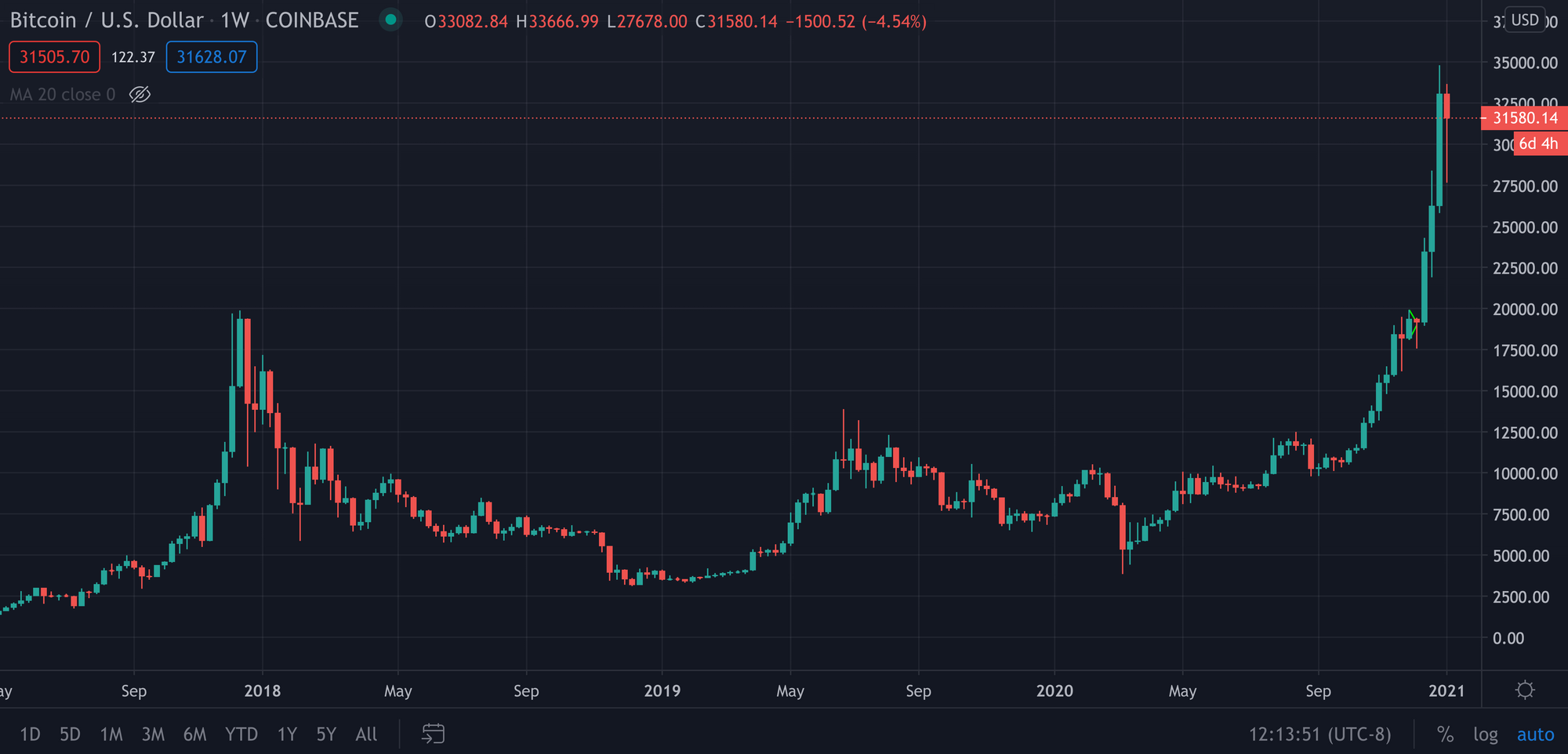Dear Bankless Nation,
Congratulations on making it this far into the journey.
In just a few short weeks, BTC went from under its all-time-high to completely blasting through it with a velocity rarely seen before.
The fundamentals behind this move have been fairly obvious. We’ve talked about them ad nauseam on the Bankless program. It’s the money printing, the growing attention from prominent macro investors, and the acceleration towards a digital world.
But when BTC broke its previous all time highs of $20k, a new fundamental price-mover stepped into center stage: Reflexivity.
Reflexivity refers to the positive feedback loop where rising prices attracts new buyers, which drives prices higher, which draws in more buyers, and so on. This feedback loops continues until price substantially deviates from equilibrium prices and becomes unsustainable.
Sound familiar?

And while most of the world doesn’t own Bitcoin, they recognize the name this cycle. Now that Bitcoin has re-entered mainstream conversation the reflexivity switch has flipped from neutral to on. Now the rest of the story writes itself.
Yet, we’ve not seen Bitcoin come out of hibernation in such a rapid fashion. Twelve weeks ago Bitcoin was in the $10,000 range. Just last week it painted its largest ever weekly candle: $26,000 to $33,000 in 7 days.
And Bitcoin isn’t alone.
ETH
After patiently waiting for its turn, ETH sky-rocketed from $700 to over $1,000 in the last two days. With so much upside contained within such a small amount of time, it’s important to not get caught off guard.

For those who've stuck it out since 2017, nice job.
This massive upwards movement feels like the arrival of a long-awaited destiny. But why does it feel this way?
The answer again is reflexivity. Fundamentals are out; reflexivity is in.
We are entering the ponzi game phase of crypto assets. People are seeing the headlines, checking the price movements, licking their lips and pressing buy. They’re FOMO’ing in just as they do in every bull cycle.
This is the time where people purchase the asset with the hopes of being able to sell it for a higher price in a few short weeks, maybe months. And this time, so many more people knew this bull run was coming. This is why we’re see 6 months of price action squeezed into 6 weeks for BTC and 6 days for ETH.
In the reflexivity phase price becomes a number that moves up or down without rhyme or reason. Trying to rationalize price or justify it is becomes fools errand—we’re all just along for the ride.
But how should we manage through a highly reflexive bull market like this?
How to Not Lose Money in a Reflexive Bull Market
There are plenty of ways to lose money in a bull market, and it takes a cool head to make it through without falling into bull market traps. You need to have a plan. You have to be pragmatic.
As someone who fell into these traps in 2017, I ended the bull market with less money than I could have, while experiencing more stress along the way.
Here’s three lessons I learned from last time:
1. Don’t increase your spending without selling
During the 2017 run, I made more money than I ever thought I would have in my early 20’s. So I started making more purchases, eating out more, and overall just consuming more.
My assets were going up like every week. I could afford it!
This was true. I could have afforded it if I had sold.
But I didn’t. So I ended up with a nice sized credit card bill as I watched ETH fall from $1,300 to $600 in January 2018, and even lower after that.
Whoops.
2. Don’t trade like you’re a pro
Unless you are putting >40 hrs a week into active practicing and enacting proper risk-management, you’re not trading. You’re gambling.
People think trading is this glorified job where you walk in with $200 and walk out with $20,000 without breaking a sweat.
It’s not. It’s a job. And it’s just as laborious and intensive as any other, if not more. If you have never traded before, then you are not a trader, and you are not good at it.
How often do you go to casinos? How much do you withdraw from the ATM when you get there? These amounts should line up with how much you trade.
Honestly, unless you’re a professional trader at a major firm, it’s probably wise to not trade and just hold.
3. Don’t try to multiply ‘life changing money’
Prices won’t go up forever. If you find yourself in the possession of a ‘life-changing amount of money’, why bother trying to hold for 2x in life-changing amounts of money? You only have one life!
When crypto prices go up, they go up fast. Everyone’s a genius when prices are mooning. But when they go down, they go down fast. Crypto markets can turn on the drop of a dime. And you never know when it’s going to happen.
So take some profits on the way up!
Create a sell plan, and stick to it. You’ll be better off. Plus, you’ll have the dry powder to accumulate more during the next bear cycle.
We’re in the reflexivity phase now.
Keep your wits about you.
